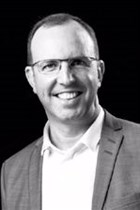





I'm always fascinated that the small matter of why people choose to do business with your company, rather than a competitor's company, isn't an ongoing and obsessive question around the boardroom table. And, as importantly, what are the preconditions towards such success?
If we want to sell more goods and services than our enemies (it sure is a war out there for business), what question could be more important? And who are the best folk to push for these results?
Successful organisations today are scared of risk. They have something to lose and therefore have become defensive in their strategies. When they are small or starting off, they need to be fresh and act differently in order to grow. They need to offer something new and here's where the maverick leaders and entrepreneurs start off. They get to invent or do things in a new way that's different to what the market's offering.
This gets the company noticed. It challenges the status quo. People question their current repertoire and new choices get made. It can be on a product level or on an emotional level, preferably both. Newness, however, doesn't come from them that tow the party line. The “towers”, as we'll now call them, extend distribution, drive efficiencies, formularise, push margin, develop safe brand extensions and are great at delivering results off the existing platform and paradigm.
But what about the “imagineers”, to use a Disney term? How do they get attracted to or hired by organisations, rather than simply being bought out by them? For example: they start a Jo Malone toiletries and Estee Lauder buys them; they start a Naked Smoothies and PepsiCo buys them. How much innovation or fresh thinking is being originated by fresh thinkers within the company versus an acquisition model?
So, the challenge here is to hire more dreamers.
For a company to grow, innovate and thrive, it needs fresh inputs and wanderlust talent. Before you simply go out and hire today's best graduates, you need to take stock of the new order.
An ethos, modus operandi or vision and values document are valuable in ensuring people in the company understand who you are and what you stand for. And that's where it ends. The old adage of “behavior is truth” has never been more pertinent when “managing” the hopes, dreams and aspirations of Generation X and now Gen Y. These people innately believe they have choices and options. And they align themselves with companies in the short term to learn or the long term to live. They need to feel free and empowered. They want to be stretched and grown. They're hard work. But often it's worth it.
With them, you need to walk the talk, not preach it. You need to challenge and stretch them. Hire them and direct their efforts, don't micro-manage.
Now consider that this is your emerging consumer base. The cynical, instant gratification and easily disposable, self-created content inhabitants of the Web 2.0 world. As consumers, brands will have a tough time locking these kids in for the long term.
Due to our natural programming to be creatures of habit, change mostly demands a specific and fundamental break with ingrained habits or trusted fall-back positions, in order to find new ways and solutions.
Our programming during challenging times is to cash-in, not double our investment once the shares, for example, have halved. We revert to distress marketing, markdowns, sales, budget-cuts, and clearances. These tried, tested and often unsuccessful measures become the norm; for, like with that little boy in the Emperor's new clothes, people are often afraid of calling it.
For example: I had a client a few years back who only wanted to run 15-second television spots. Her media company had convinced her that for its budget, this was the only way it could achieve the necessary reach and frequency to communicate with the consumer. Given the mandatories of showing actual product, there was little time left to have a rewarding concept or build an emotional connection with the consumer. The work was largely generic. Once we changed the channel strategy and looked beyond “conventional wisdom”, great relevant work emerged. So, if your average consumer were indeed George Orwell's 6079 Smith, then we may well comfort ourselves with historic measures.
But as warm blood pumps through our veins and even a rational decision largely has an emotive base, traditional formulas become limited thinking. Now, I don't wish to dwell on the old frequency versus impact argument as it places an unnecessary tension between the two. The job of channel is simply to find the consumer in the best possible environment and to help engage and draw them in to receive the advertising message. No more, no less. So, when Apple decided in 1984 to run its legendary Big Brother ad, just once, during the Super Bowl, it understood this.
We all need to challenge the idiotic notion consumers can be reached purely through formulas and templates. Look at the agencies that do this - they are dying.
To get new outcomes, we need to try new things. Greatness doesn't come out of nowhere. It is seldom through luck or divine intervention. It is a factor of time, determination and a commitment to learning through failure.
How many of us give up some bold and brave pursuit due to an early disappointment or failure? Often our greatest rewards may lie just over the cusp of an initial disappointment but if we don't push through, we may never realise the opportunity.
The most admired chefs in the world rely entirely on this process of celebrating failure in order to find glory. It is the famed process of experimentation (the word itself contains frequent failure as an expected by-product) that has made the chef Ferran Adria of El Buli in Spain have over 500 000 people trying to get one of only 8000 seats per season in his restaurant. There is currently a two-year waiting list. The staggering reward of trial and error.
An organisation that wants to break new ground must have a rough budget for failure. It must not approach these projects randomly but as part of an ethos and for breaking new ground. It is vitally important to clearly understand and define what your organisation stands for, and where you wish to take it - at this point, you will be liberated to take braver decisions because they will be in pursuit of something bigger or greater than the status quo.
Some believe there is no reward in simply perpetuating someone else's legacy. I would. This legacy is often the vital platform from which a company can spring to greater ambitions and new areas.
Recognise the key and core strengths, mythologies and beliefs of the company and its leaders. Then use these as a directional compass, rather than as a defined road map, where you can't leave the high ways to explore rougher terrain that may contain a spectacular vein of gold or a fluffy new taste sensation.
When confronted with something new, our first temptation is often to reject it. This is a universal truth. Many things, however, become acquired tastes. You get used to them and then you love them. Don't walk away if the first taste is not to your liking.
Go now, and fail gloriously.
